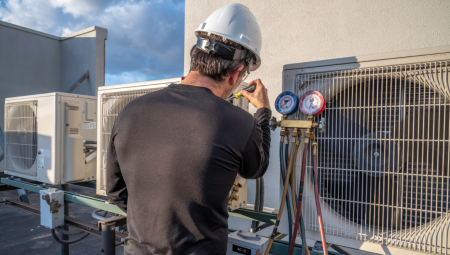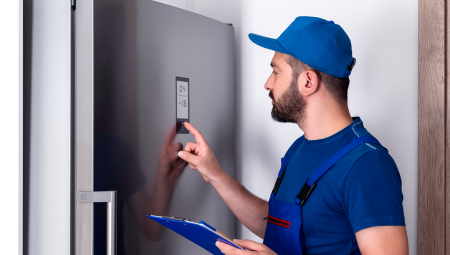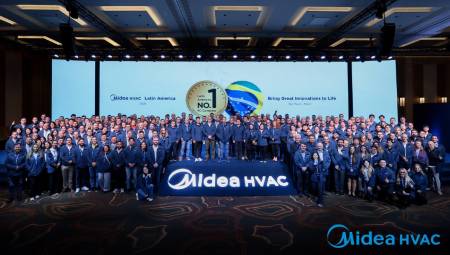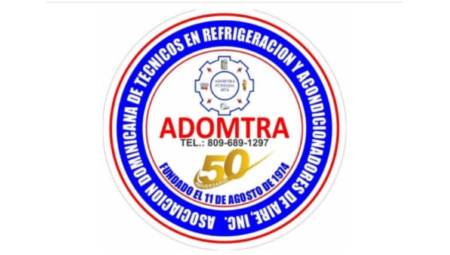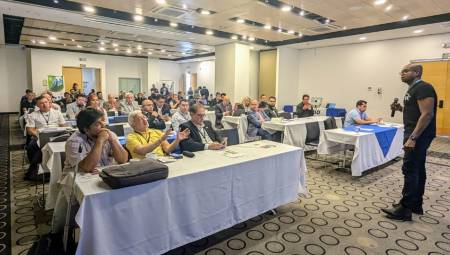Oxyacetylene welding performs the combustion of acetylene with oxygen in a model or torch to produce a flame that melts a contribution material that allows to join two metals, either of the same material or even of different materials.
One of the most commonly used methods in refrigeration to join copper pipe is oxyacetylene welding, especially for pipes 7/8" in diameter and larger.
Acetylene is characterized by being the combustible gas that reaches the highest flame temperature, around 3480o C, has a characteristic smell similar to garlic, product of the impurities remaining from its manufacture. It is highly flammable and unstable.
Properties of Acetylene
Ignition Point: -18o C (0o F)
Auto-ignition temperature: 305o C (581o F)
Lower Flammability Limit (LII): 2.5%
Upper Flammability Limit (LSI): 100%
The flash point is the lowest temperature at which a substance releases vapors in sufficient quantities for the vapor-air mixture on its surface to propagate a flame from contact with an ignition source. This means that acetylene from 0or C is releasing flammable vapors and only one ignition source is enough for a fire or explosion to occur.
Lii is the minimum concentration of gas that, mixed with atmospheric air, can cause the combustion of the product from contact with an ignition source. Lower gas concentrations are not combustible because in that condition there is an excess of oxygen and little amount of the product for combustion. That condition is called "poor mixing."
LSI is the maximum concentration of gas that, mixed with atmospheric air, can cause the combustion of the product from contact with an ignition source. Higher gas concentrations are not combustible because in that condition there is an excess of the product and little oxygen for combustion to occur. That condition is called "rich mixing."
From the above it follows that acetylene is a combustible gas that ignites even in small quantities, so you should always be attentive to any leak, no matter how small.
Acetylene is a highly unstable gas that begins to decompose at pressures greater than 15 psig (approximately 1 Kgf/cm2), producing very high amounts of heat that can produce very violent explosions; the range of the explosion covers 50 meters around and the shrapnel of the tank reaches 300 m.
Due to its instability, the accumulators to contain it are filled with a porous mass containing acetone, in which acetylene dissolves. The porous mass is made up of silica lime, to which some manufacturers add other materials to make a light mass with high porosity.
Properties of Oxygen
Oxygen is not flammable, but it favors and violently accelerates the combustion of flammable materials. Some materials that are not flammable with air will burn in the presence of oxygen. Materials that are burned in the air will burn violently in atmospheres containing more than 25% oxygen.
Because oxygen is packaged at high pressure (around 160 Kgf/cm2 = 2,250 Psig) contact with any organic material should be avoided, as high oxygen pressure can be the triggering factor that causes violent combustion. It should be avoided mainly to use any type of plastic or rubber packaging to connect the oxygen cylinders, especially cutting the fingers of the carnaza gloves for that purpose. Do not forget that the gas connections are made of soft metals in order for the seal to be made metal with metal.
It is important to note the importance of avoiding blowing clothes with oxygen, as this can cause the fibers to become saturated, and with the slightest source of heat cause their combustion in a violent way.
Flame Recoil
The main cause for a flame recede is located in the premix of acetylene and oxygen, before the mixing chamber of the same in the blowtorch. This premix can occur due to incorrect pressure adjustments due to a failure of the pressure regulators, obstructions in the hoses or an operational failure.
There are three different types of flame recoil:
Momentary Recoil: It is easily identified because it causes successive bursts on the blowtorch. These bursts are generated by a momentary flame recoil in the blowtorch nozzle. The flame recedes in the direction of the inside of the torch, immediately exiting to the outside, where it goes into combustion. The cause of this effect is that the speed of the gases is less than the rate at which they burn.
This type of recoil usually occurs when working with pressures that are not adequate. Another reason that causes it is to weld the inner edges of a structure that reflects the heat towards the nozzle. Another cause is when it is used in the cutting process and the resulting slag is repelled against the nozzle, blocking the normal exit of the gases.
Momentary recoil does not pose great risks if the necessary precautions are taken, which involves interrupting the work for cleaning the nozzle or adjusting the gas pressures. Otherwise, the momentary retreat could lead to a sustained retreat.
Sustained Recoil: In this event the flame recedes into the torch staying inside it and entering combustion, usually inside the mixing chamber. When a recoil of this type occurs, it may be accompanied by a whistle that is characteristic of it. In the event that no immediate action is taken, sustained recoil melts the torch throwing molten metal that can seriously injure operators in its environment.
In case of sustained recoil, the oxygen flow should be closed immediately and then the acetylene flow should also be closed quickly. Both closures must be carried out first on the torch and then on the cylinders. Cutting off the flow of oxygen interrupts the internal combustion in the torch. The flame, which can be kept without oxygen, comes out of the torch and can be extinguished with the closure of the passage of acetylene.
Total Recoil: In case of a total recoil, the flame recedes through the torch penetrating one of the hoses (which would contain the premix) at a speed higher than the speed of sound.
This type of recoil is the most dangerous, since, regardless of the explosion it produces from the hose, the flame can reach the gas cylinders, causing an accident of great magnitude.
There is a belief that recoil can be stopped by bending the hoses, but since the speed of the same can even exceed the speed of sound, this action makes no practical sense.
In case of momentary and sustained setbacks the actions to stop them can be merely operational, however for total retreat it is not possible to rely on the ability of the operator. It is here the safety devices that were developed to prevent this type of accident.
Safety Devices for Oxyacetylene Operations
Flame Recoil Blocker for Blowtorch: These devices combine the functions of unidirectional valves by adding a stainless steel filter that works as a flame arrester in case of recoil. They also have a thermal closure unit that blocks the flow of gas in the event that the temperature exceeds a certain level (usually 95º C).
Flame Recoil Blocker for Regulator: The main measure to take to have maximum safety is to protect the regulators and cylinders in the eventual case of flame recoil. Blockers of this undesirable regulator action must be installed between the hoses and gas regulators. These equipment have the following functions: a) Unidirectional valve that prevents the eventual reflux of gas from reaching the regulator creating the conditions for recoil, b) Dry type flame cutter filter, c) Pressure closure device that closes the valve before it reaches the regulator (by action of back pressure), d) Thermal closure device that closes the gas passage in case of overheating.
 1. Regulator2. Flame recoil device
1. Regulator2. Flame recoil device3. Hoses: Keep them protected from fire danger
4. Hose clamp
5. Protective cap for cylinder valve
6. The nozzle is the most commonly used tool for cutting and welding. Take care of her!
7. Flameproof glove
8. Upright gas pipes must be tied using safety chains on walls or to the transport trolley.
Basic Safety Measures with Oxyacetylene Equipment
1. Delimit and signal the work area. 2. Verify that both the handle and the nozzle have their seals complete and in good condition (o-rings). 3. Verify that the hoses and connections do not leak. 4. Replace cracked hoses or those with tears. 5. Avoid joining the acetylene and oxygen hoses with insulation tape, it should be replaced by plastic belts. 6. Ensure that the recoil blockers are installed on the torch mode and between the hoses and the regulator. 7. Verify that both the regulators and the pressure gauges are in good condition of use. 8. Have a dry chemical powder or halon gas extinguisher next to the equipment. 9. Operate with the recommended working pressures for the nozzle. 10. Use appropriate personal protective equipment: 4-6 shade welding goggles, gloves, breastplate and gaiters. 11. Protect hoses with compression-resistant step supports when crossing roads of persons or vehicles. 12. Prevent hoses from coming into contact with hot surfaces, sharp edges, live angles or sparks. 13. Avoid hitting cylinders. 14. Keep the area clean and tidy during and at the end of the activity. 15. Do not hit the torch. 16. Do not use oxygen to clean parts, pipes or blow clothes. 17. No smoking while the work is being done. 18. Verify that the equipment is 3 meters away from the workplace. 19. Place caps on cylinders when stored or out of use. 20. Store cylinders vertically and chain secure them. 21. Prohibit work in premises where flammable materials are stored.Authors:





